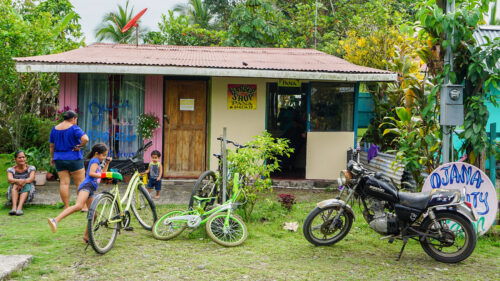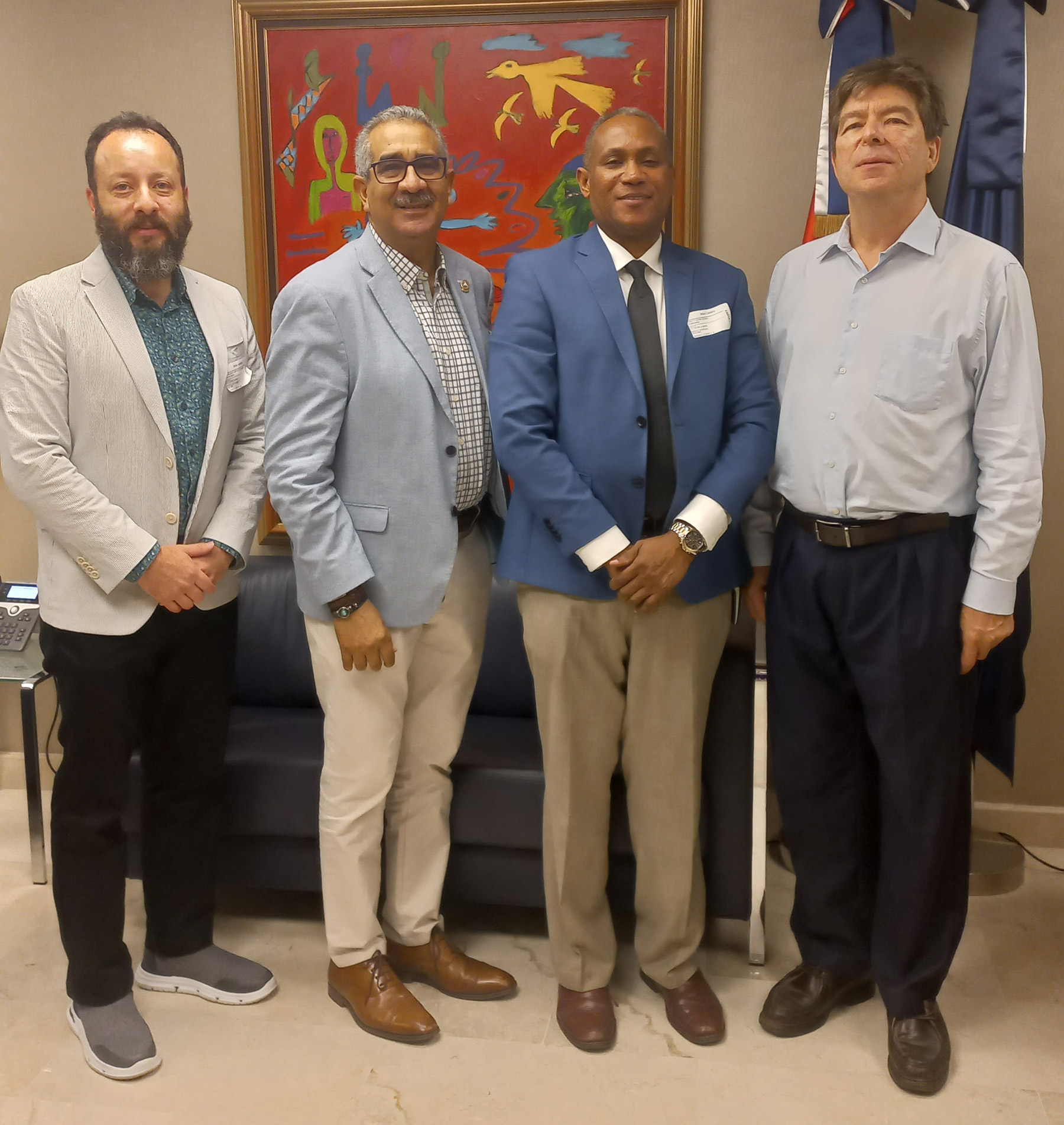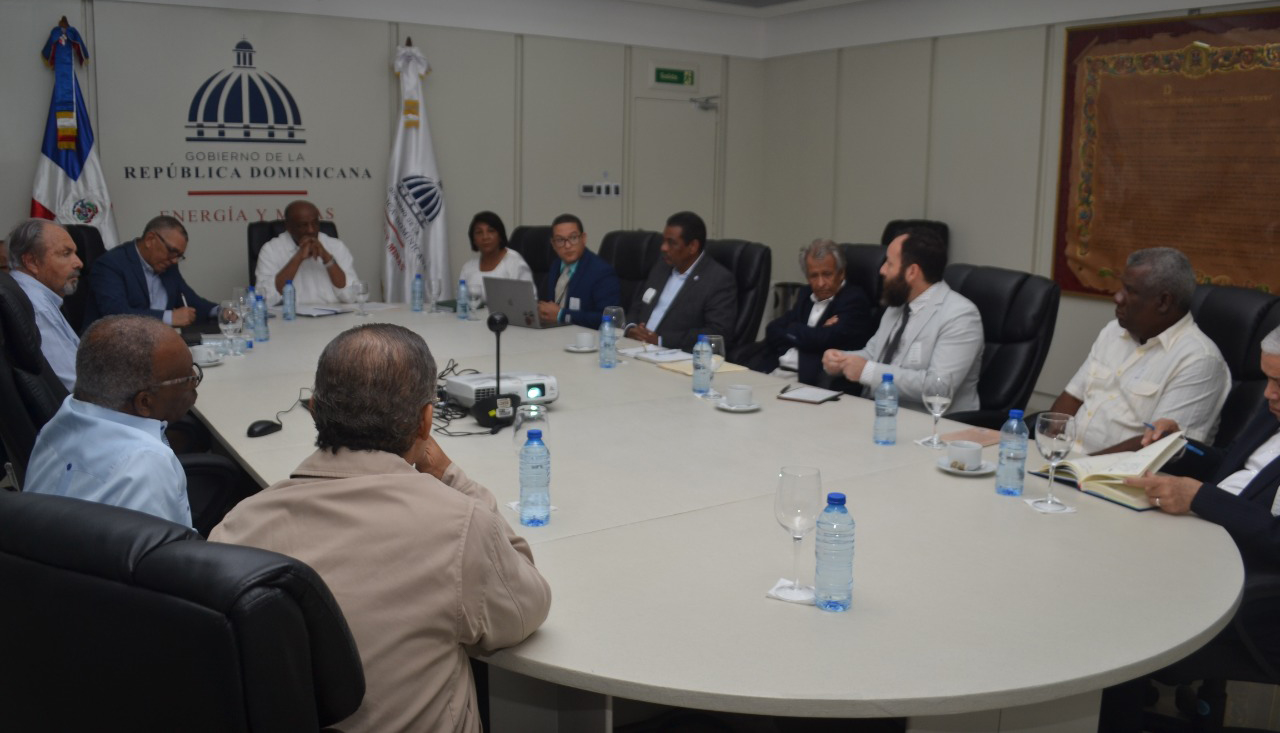
Stop Burning Money
Turning a fossil fuel electricity subsidy into solar energy in the Dominican Republic.
Imagine that you are a typical family living in a low- to middle-income community in the Caribbean nation of the Dominican Republic. You earn close to the average salary of US$250 per month and your monthly household electricity consumption is 200 kilowatt-hours (kWh) — about one fifth of the average US household. You pay on average US$25.00 per month for your electricity. The real cost of electricity is US$62.50, but the government is paying nearly 60 percent of that to subsidize the high cost of fossil fuels used to generate electricity in the nation. Even with the government subsidy, 10 percent of your salary must go toward powering your house. Without this government subsidy, 25 percent of your salary would have to go to electricity costs, making the subsidy essential to maintain a basic standard of living for you and your family. Each year, you pay US$300 for your electricity and the government pays US$450. This electricity is not only expensive, but polluting your environment — spewing increasingly high amounts of carbon into the atmosphere as local populations increase. This has happened for decades, and if nothing changes, it will continue to happen into the future.
Now imagine next month, instead of giving you the electricity subsidy that you would require over the next three years, you receive a grid-tied, net-metered solar photovoltaic (PV) system on your roof that provides 100 percent of your electricity needs. Incredibly, in the Dominican Republic, a grid-tied PV system that produces those 200 kWh/month can cost approximately US$2,400. To pay for the system, the government gives you a grant of US$1,330 (equivalent to three years of subsidy) and a local cooperative provides you with a loan for US$1,070.
The system lowers your monthly electricity cost to US18.75/month (25 percent less than what you pay now for electricity), of which US$2.40 is the fixed fee and US$16.35 is your monthly payment to the cooperative for five years. This system ensures reliable electricity for your family and, while you pay off the loan for the solar system, your cost of electricity is reduced by 15–25 percent from its prior level. In five to six years, once you have fully paid off the system, your electricity costs are 90 percent lower than their initial level, now making up only 1 percent of your salary. The graphic below depicts your monthly cash flow, with a savings of US$6,900 over 25 years.
Let’s flip roles. Now imagine that you are the Government of the Dominican Republic, aware of the challenges in the power sector such as high and fluctuating electricity prices, energy dependency due to reliance on imported fossil fuels, and poor grid resiliency, which are problems faced by many nations in the region. Historically you have tackled these challenges in an atomistic way — choosing to focus on the largest and most short-term problem: the high electricity prices to consumers. The most effective strategy that you have found is a monthly electricity subsidy in which you pay for 35–60 percent of all electricity consumption for each consumer to offset the high costs of fossil fuel. This costs you US$2 billion/year, or 11 percent of your 2023 annual budget, to ensure that the nearly 2.8 million households in the country can not only power their homes, but also afford an acceptable quality of life for their families.
You realize that rather than continuing to pay billions in electricity subsidies each year, you can invest three years of electricity subsidies, around US$6 billion, to help install stand-alone solar systems at all residential homes. Amazingly, every time you help a family install a solar system on their home, since the family is now producing their own electricity, you don’t have to pay the subsidy anymore... forever. Thus, your new strategy has eliminated the electricity subsidy completely and will save you at least US$2 billion a year, as fuel costs are likely to rise further in the future. Further, this model is scalable globally, providing a long-term solution for other nations with a similar history of using fuel subsidies to stabilize electricity costs.
Turning the Electricity Subsidy into Solar Power
The current subsidy is effective at lowering costs for electricity consumers, but ineffective at reducing overall country costs and creating lasting change. At the end of the day a subsidy is still money sent off island. In a changing world with highly volatile fuel prices, an increasing frequency of grid-impacting storms, and a drastic cost reduction of an ever-improving solar technology, the electricity subsidy is just a band aid for the much larger issue at hand: a power sector reliant on fossil fuel. The billions of dollars being dumped into the electricity subsidy just continue to perpetuate the struggling power sector in a negative feedback loop — the subsidy supports burning fossil fuel to allow for more and more energy consumption, which further increases the need for the subsidy. The government is literally burning money to burn more money in the future. The good news? They are actively exploring new systems and possibilities.
It’s possible to rethink the electricity subsidy using blended financing to create a more lasting impact. With support from the Rockefeller Foundation, the RMI Islands team has used a blended financial model in Puerto Rico to help install commercial-scale solar and battery systems at critical facilities. It involves a blend of money from “free” capital, either philanthropic donations or grants, and a bank loan to surpass the high upfront capital cost barrier for solar systems. However, within countries that currently have high energy subsidies that could be used as the “free” capital, blended financing is a no brainer to quickly transform energy systems, paving the way toward a more holistic approach to tackle not only the high cost of electricity, but also longer-term resilience and independence goals.
The blended financial model presents a solution to rapidly scale solar — which ripples into fixing most other problems: the reinvestment of electricity subsidies generates local jobs in the solar sector, improves energy independence, reduces carbon emissions, and improves overall environmental health. The blended finance approach works because it addresses the barrier of high upfront capital costs that the Dominican Republic and many other countries in the Caribbean face. If the government could spend 2.5 to 3 years of its typical electricity subsidies, or US$4.5–US$6 billion, in funding rooftop solar systems for residential households and small businesses, it could eliminate the electricity subsidy forever. Thus, using electricity subsidies in combination with loans to fund rooftop solar systems is a win-win for consumers and governments.

Euren Cuevas, executive director of the Lawyers Institute for the Protection of the Environment (INSAPROMA) in the Dominican Republic thinks it’s a great idea. “Consumer electricity costs essentially vanish, and the government no longer needs to pay billions a year in an electricity subsidy,” he says. “It just makes sense — and we have the capacity to do it today.”
It seems too good to be true, but it could be made a reality through continued collaboration and a holistic view of the energy space.
What Next?
Alongside the government and local partners, including INSAPROMA, RMI has been pioneering this blended finance model in the Dominican Republic to resolve systematic problems of electricity subsidies and to unlock rooftop solar for 200,000 homes in low-middle income communities and small businesses in vulnerable sectors. The electricity subsidy is essentially flexible capital that the government is already committed to spending in the future that can be better utilized to quickly transform the power system. A newly formed coalition called “RD 100% Renovable,” which translates to “Dominican Republic 100 percent Renewable,” includes the Government and various local and regional entities that are committed to install 600 MW of rooftop solar in the Dominican Republic using this model.

The process is already underway with negotiations and excitement from all stakeholders — however, we need to take a few critical steps first. While the long-term model is self-sustaining, meaning that the money saved by the government from not having electricity subsidies will be used to fund future solar systems, some upfront capital is needed to start and initially sustain the project, such as for hiring, assembling key stakeholders, project procurement, and more. Additionally, there will be costs to maintain, execute, and communicate on the broader mission and outcomes of the model — both within the Dominican Republic and beyond. Philanthropic support will help us close these funding gaps and get started more quickly.
This model is transferable, meaning it could provide reliable clean electricity to millions of customers and reduce spending on energy for governments around the world. The exhibit below shows 2022 estimated fossil-fuel subsidies for electricity and oil around the globe as a share of GDP, and it reveals that there are many countries in Africa, the middle east, Oceania, and bordering the Caribbean that could benefit from this model.
Leveraging over 10 years of deep national partnerships and collaboration, as well as technical expertise, RMI is well placed to support the Dominican Republic’s transition to renewable power. To make a gift and accelerate our collaborative impact, contact Jennifer Stokes, managing director of Development, at jstokes@rmi.org. If you are interested in more information on this initiative, please reach out to Max Lainfiesta at mlainfiesta@rmi.org.
